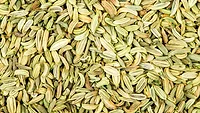Infants Given Formula Most at Risk of Exposure to Petroleum-Derived MOH Chemicals, EFSA Concludes

Image credit: Public Domain Pictures via Pexels
To inform the European Commission’s (EC’s) decision on whether to establish maximum levels for mineral oil hydrocarbons (MOH) in certain foods, the European Food Safety Authority (EFSA) recently published an update of its risk assessment on dietary exposure to the chemicals. MOH are substances derived from crude oil, coal, gas, and biomass that can enter food through environmental contamination, as additives, or from food contact materials.
EFSA’s Scientific Panel on Contaminants in the Food Chain (CONTAM) published its original scientific opinion on MOH in 2012, at which point, EC organized MOH monitoring in food and all food contact surfaces to fill analytical data gaps. In 2020, EC mandated EFSA to update the scientific opinion on the hazard/risk characterization of MOH based on recent toxicity and occurrence data.
There are two main classifications of MOH—mineral oil-saturated hydrocarbons (MOSH) and mineral oil aromatic hydrocarbons (MOAH)—with differing adverse health effects. CONTAM’s original opinion found that MOSH can accumulate in human tissue and can harm the liver, while MOAH, especially those with chemical structures including 3–7 aromatic rings, may damage DNA and cause cancer.
Based on a literature review about MOH toxicity and occurrence data collected by EFSA from 2011–2021, EFSA concluded that it is likely to very likely (66–95 percent certain) that the present dietary exposure to MOSH does not raise concerns for human health regarding harm to the liver. However, it is extremely likely (99–100 percent certain) for toddlers and likely (more than 66 percent certain) for other age groups that present dietary exposure to 3-aromatic ring (or more) MOAH, which are associated with DNA damage and cancer, raises a possible concern for human health. Additionally, dietary exposure to 1- and 2-ring MOAH lacks reliable toxicity data, which raises a concern.
Overall, the highest levels of MOH were found in vegetable oils and the population with the highest exposure was young people, mainly infants via infant formula.
Limitations aside from the lack of toxicity data for 1- and 2-ring MOAH included insufficient oral toxicity data for 3- or more ring MOAH or data on their concentrations in foods. The large number of chemical compounds in the MOH group also made it impossible for EFSA to create a complete list of chemical characteristics.
EFSA’s recommendations to EC regarding MOSH are to determine its concentrations in food, improve analytical methodology for characterization and reporting, increase knowledge on sources of its presence in food, collect data on the products formed after MOSH is altered in the body, investigate its structure and why it causes accumulation in the body, and to learn more about its toxic effects to human health. For MOAH, EFSA recommended determining concentrations in food, collecting more data on composition by aromatic ring number, researching the damaging influence that ring alkylation of 3- or more ring MOAH has on genes, gathering oral toxicity data for 1- and 2-ring MOAH, investigating sources of MOAH food contamination, and updating technical specifications with detailed information on MOAH content and composition of white mineral oils and waxes used as food additives and food packaging materials.
Looking for quick answers on food safety topics?
Try Ask FSM, our new smart AI search tool.
Ask FSM →








